Herb Garden Trellis Ideas: Creative Solutions for Small Spaces
Looking to add some charm and functionality to your herb garden? Using a trellis can be a game-changer. Whether you have a small balcony or a spacious backyard, a trellis provides a great way to maximize your space and add a decorative touch.
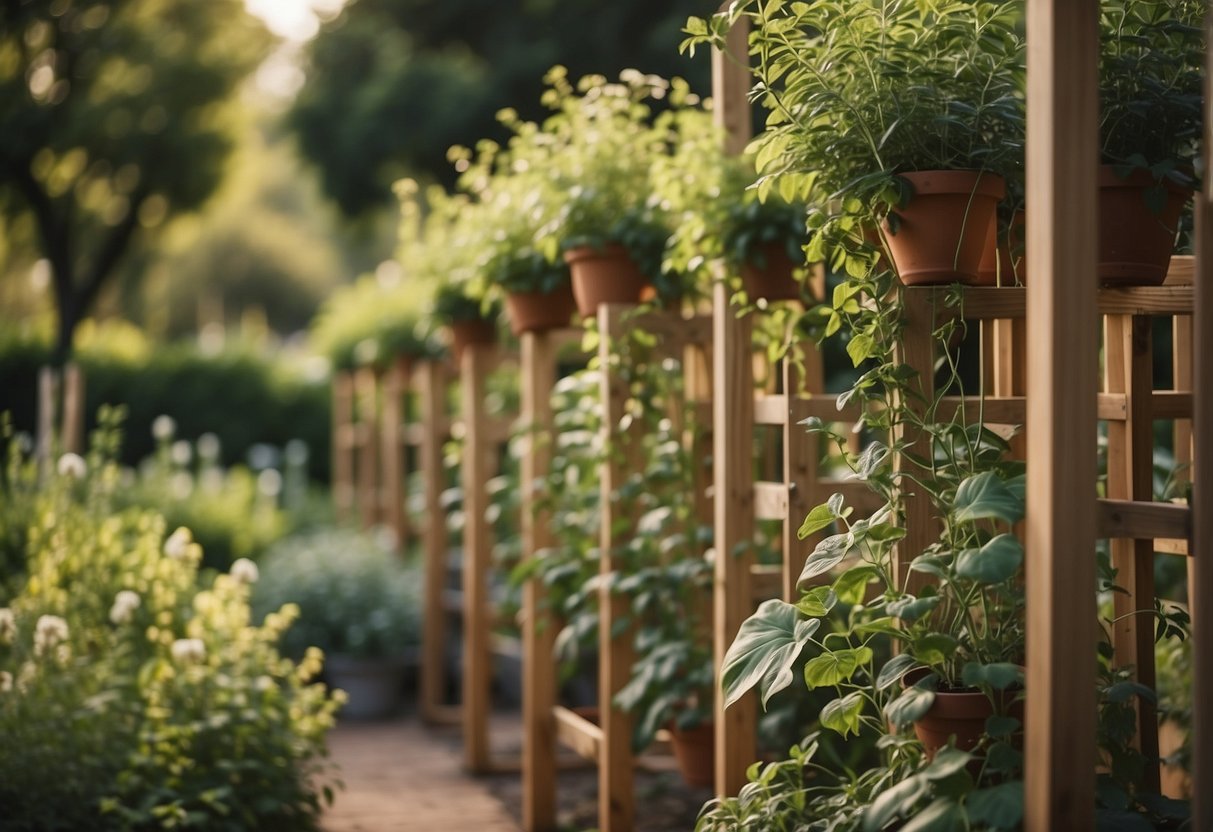
With the right trellis, you can train your herbs to grow vertically, giving you more room for other plants and making your garden easier to manage. Plus, it’s a visually appealing way to organize your plants. Get ready to explore different ideas that will inspire you to create a stunning and practical herb garden!
1) Copper Pipe Trellis

A copper pipe trellis is both beautiful and durable, making it a great addition to your herb garden. Copper pipes are sturdy, easy to work with, and develop a lovely patina over time.
To build one, you’ll need some copper pipes and fittings. Use a hammer and center punch to make indents for drilling. Align your holes properly by drilling straight through.
You can connect the pipes using copper elbow and tee fittings. This will help create a strong structure that can support your plants as they grow.
For more details, read here.
2) Wrought Iron Arbor
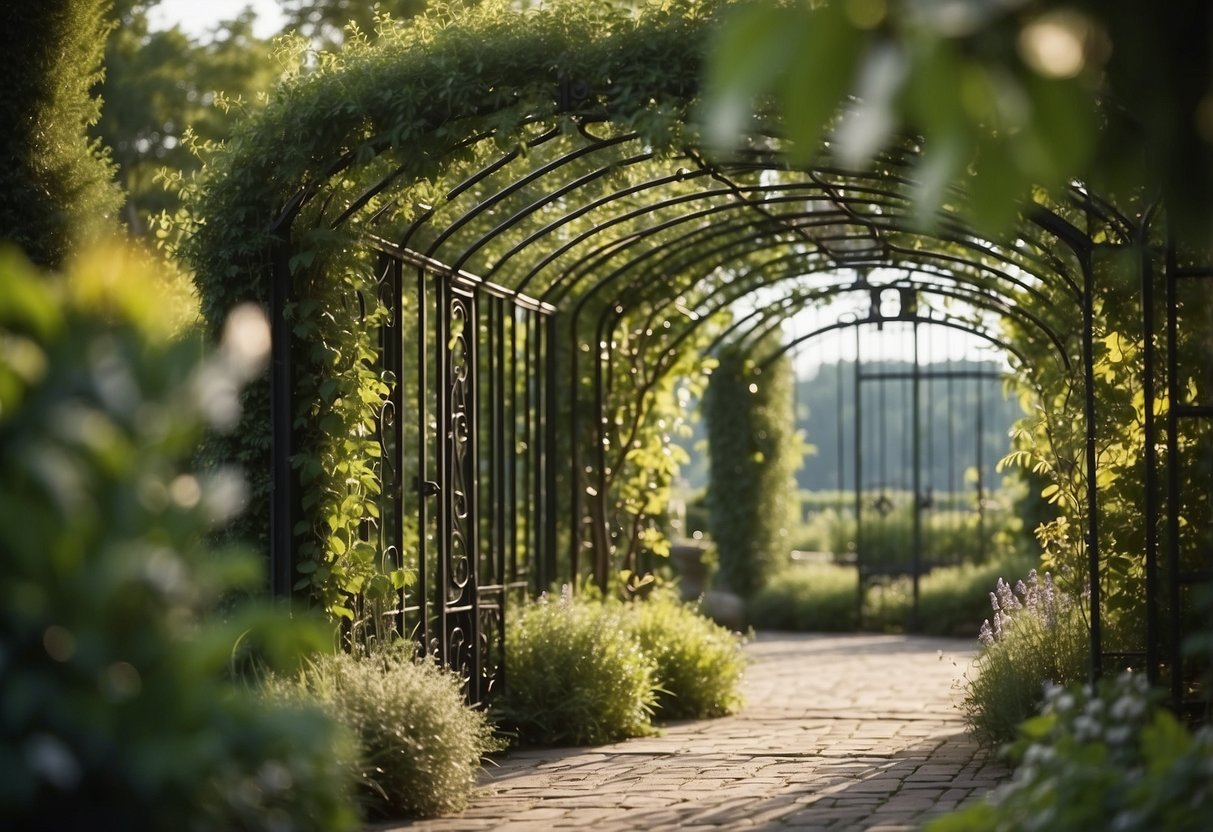
A wrought iron arbor is a fantastic addition to your herb garden. It offers both strength and beauty to your outdoor space. You can train climbing herbs like rosemary or thyme to weave through the iron.
Wrought iron arbors can act as an entryway, welcoming guests with lush, green foliage. They are durable and weather-resistant, making them perfect for year-round use. For more ideas, check out wrought iron garden trellises.
3) Wooden Ladder Trellis
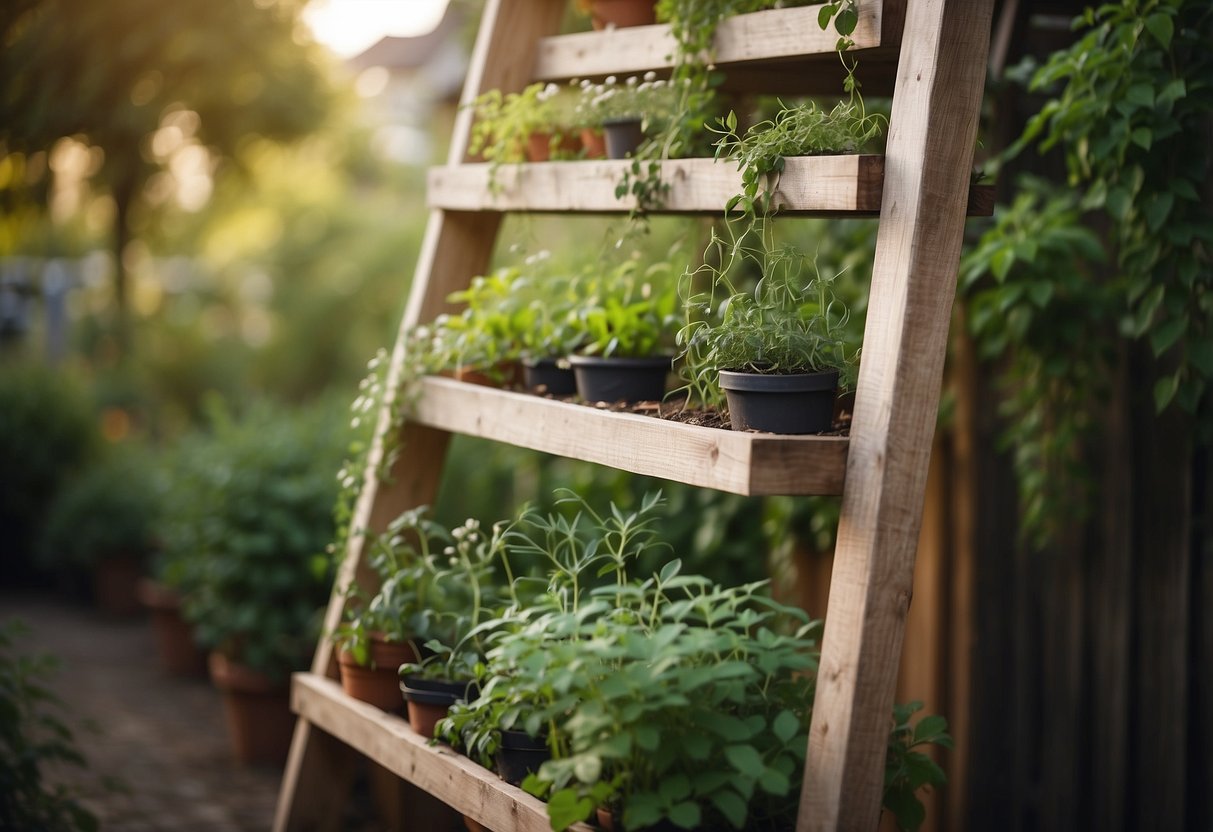
A wooden ladder trellis is a charming addition to your herb garden. You can easily make one using an old wooden ladder.
Place the ladder at an angle and secure it firmly in the ground.
Climbing herbs like rosemary and thyme will love this support, making your garden visually appealing and functional.
4) Bamboo Teepee Trellis

Building a bamboo teepee trellis is a fun and easy way to support your herb garden. All you need are some bamboo stakes and garden twine.
A bamboo teepee trellis takes up very little space when not in use. This makes it perfect for small gardens.
For a step-by-step guide, check out this easy tutorial. Happy gardening!
5) DIY Twine Trellis
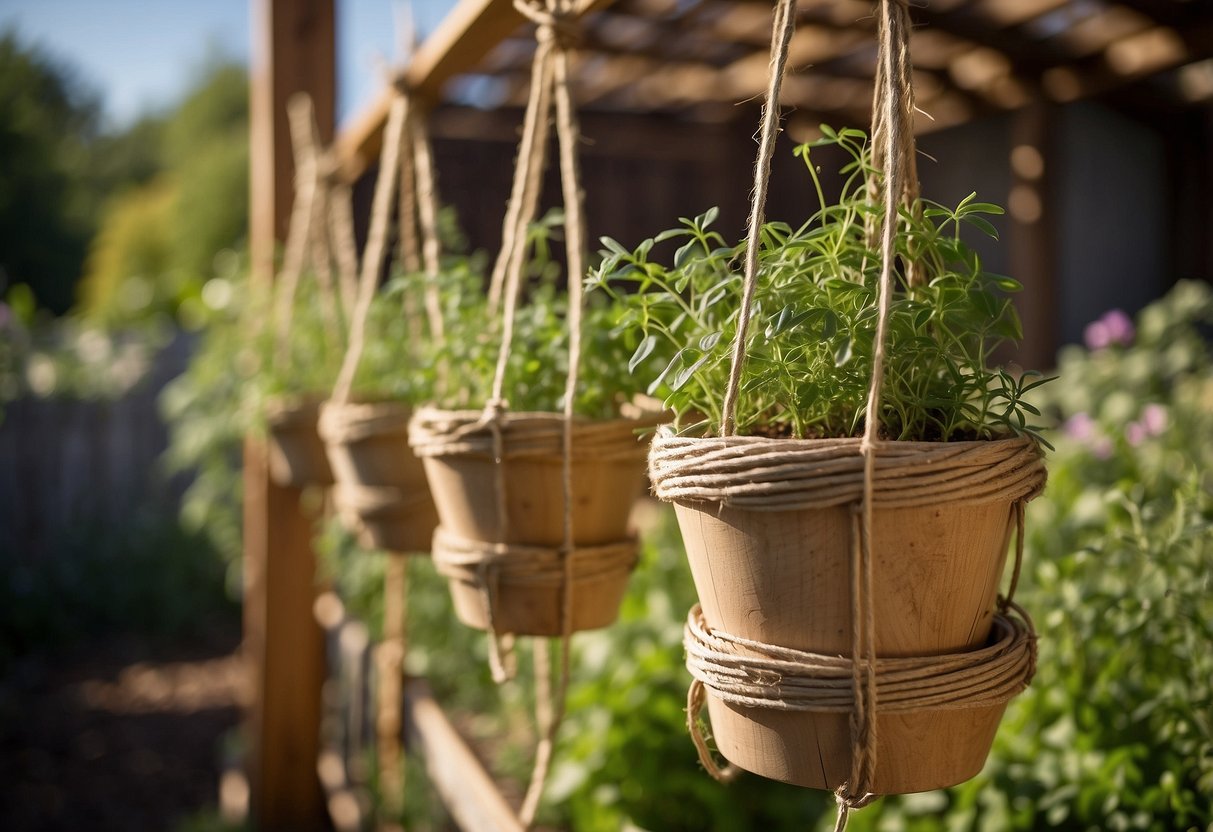
Creating a DIY twine trellis is a fun and easy project for your herb garden. You’ll need some sturdy poles and garden twine.
First, place the poles firmly into the ground. They should be tall enough to support the herbs.
Next, tie the twine to the bottom of one pole and weave it back and forth to the other pole, creating a zigzag pattern. Your herbs will have plenty of support to grow upward with this twine trellis.
This simple structure adds both charm and function to your garden. Experiment with different designs to suit your space.
6) A-Frame Trellis

An A-frame trellis is a great way to add support for your herbs while saving space. It is sturdy and ideal for climbing plants.
You can build an A-frame trellis using wood or metal. Secure the frame at the top and brace it well for stability.
This design works well for herbs like climbing mint or thyme. For detailed steps, check out how to build an A-frame trellis.
7) Recycled Bike Wheel Trellis
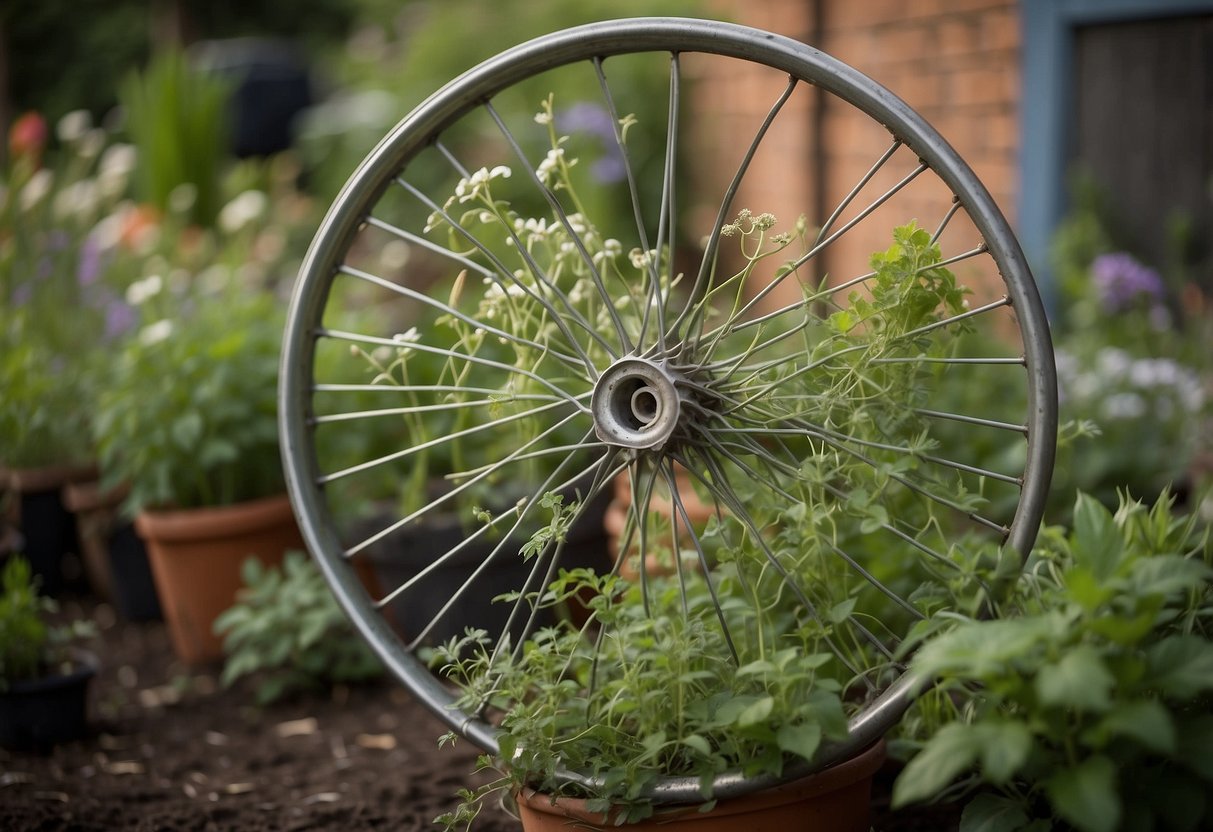
Using old bike wheels to create a trellis is both creative and eco-friendly. This design is perfect for small spaces and adds a unique touch to your herb garden.
Attach two bike wheels to an upright post. Use twine to create a web between the wheels for the plants to climb.
You can place this trellis in a sunny spot or a shaded corner of your garden. It provides excellent support for herbs like climbing beans or peas. Plus, it’s a fun project you can do in an afternoon.
8) String and Nail Wall Trellis
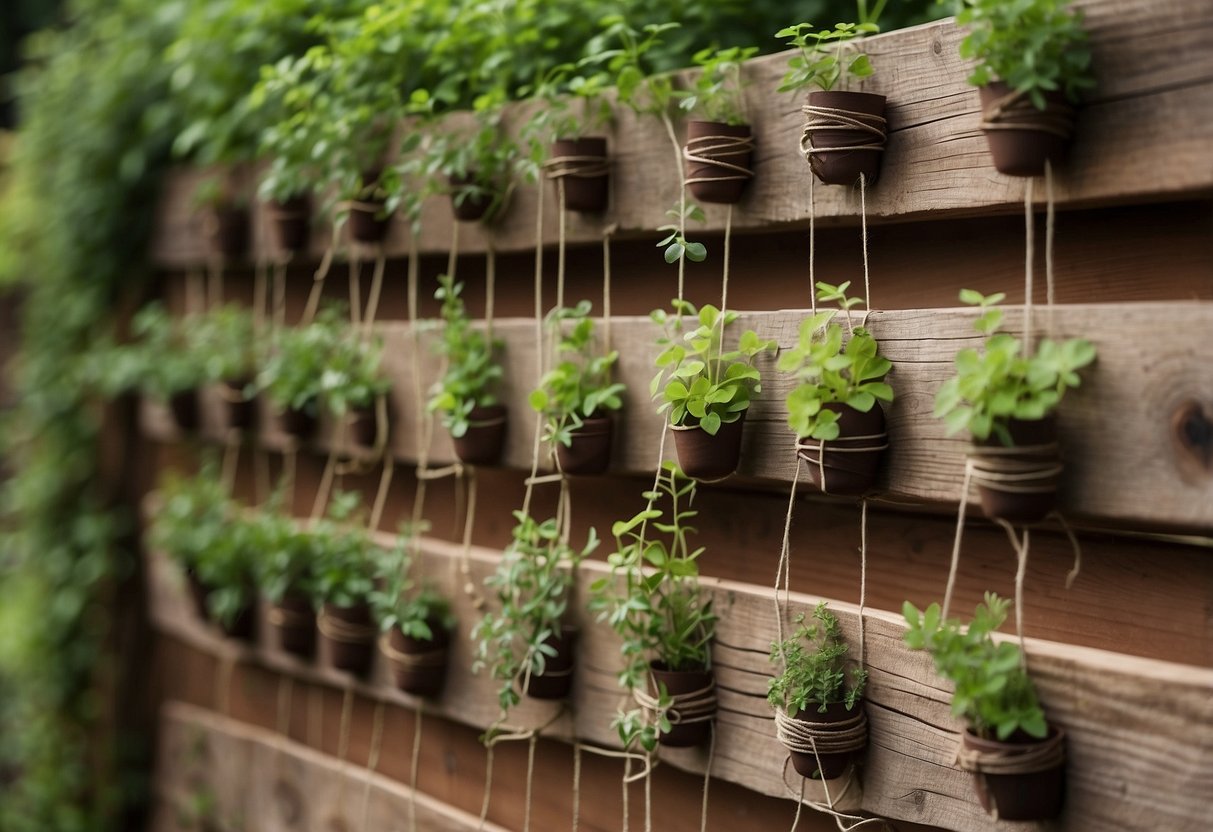
A string and nail wall trellis is a simple and effective way to support your herbs.
First, you’ll need some nails and sturdy string. Hammer the nails into a wall in a grid pattern.
Next, weave the string between the nails to create a net. This net will support your climbing herbs like peas and beans.
This setup is perfect for smaller spaces and adds a charming look to your garden. Plus, it’s easy to adjust and expand as your herbs grow.
For more ideas, check out gardens on a string.
9) Fan Shaped Trellis
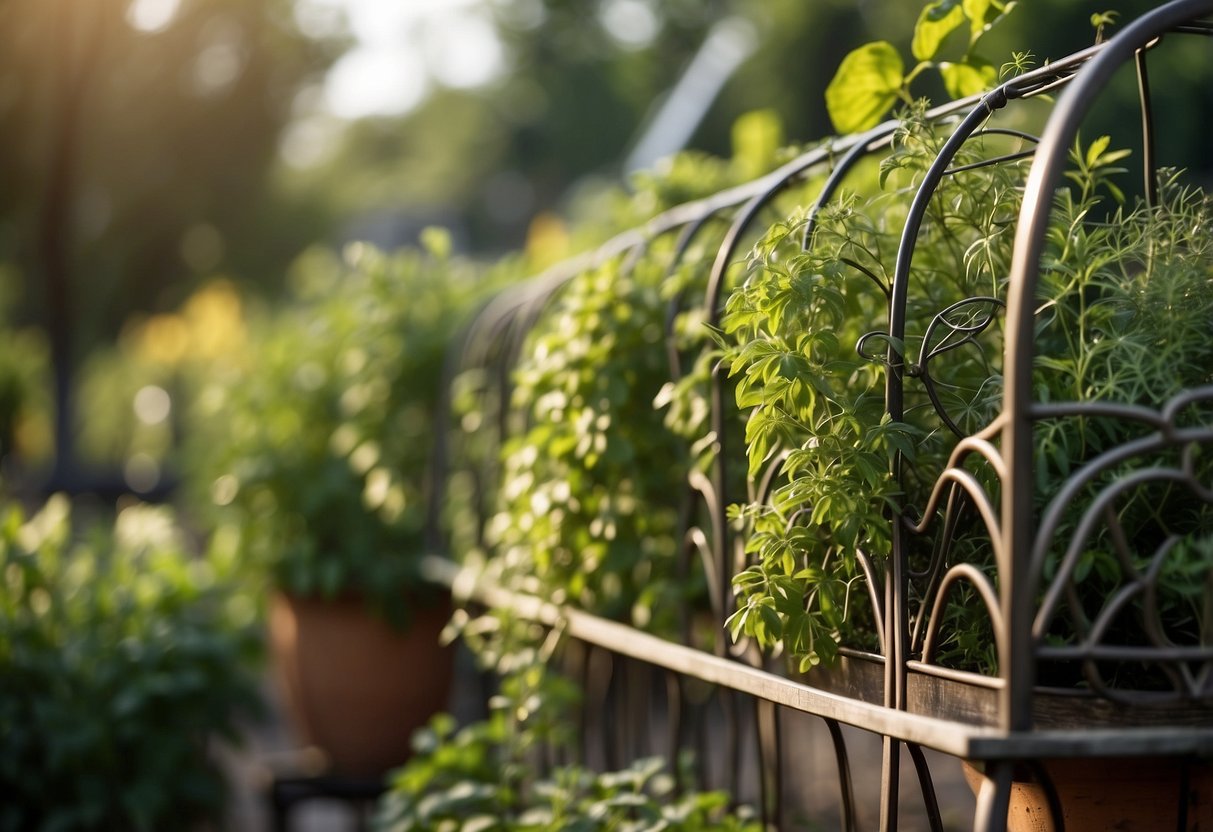
A fan-shaped trellis is a stunning addition to any herb garden. Its wide base narrows to a point at the top, creating a spreading fan-like design.
You can use this trellis to support climbing herbs like rosemary or thyme. This shape also makes it easy for the plants to get plenty of sunlight.
For a DIY project, assemble wooden slats or bamboo sticks into the fan shape. You only need a few basic tools. Check out this guide on building a fan trellis for more details.
10) Rustic Log Trellis
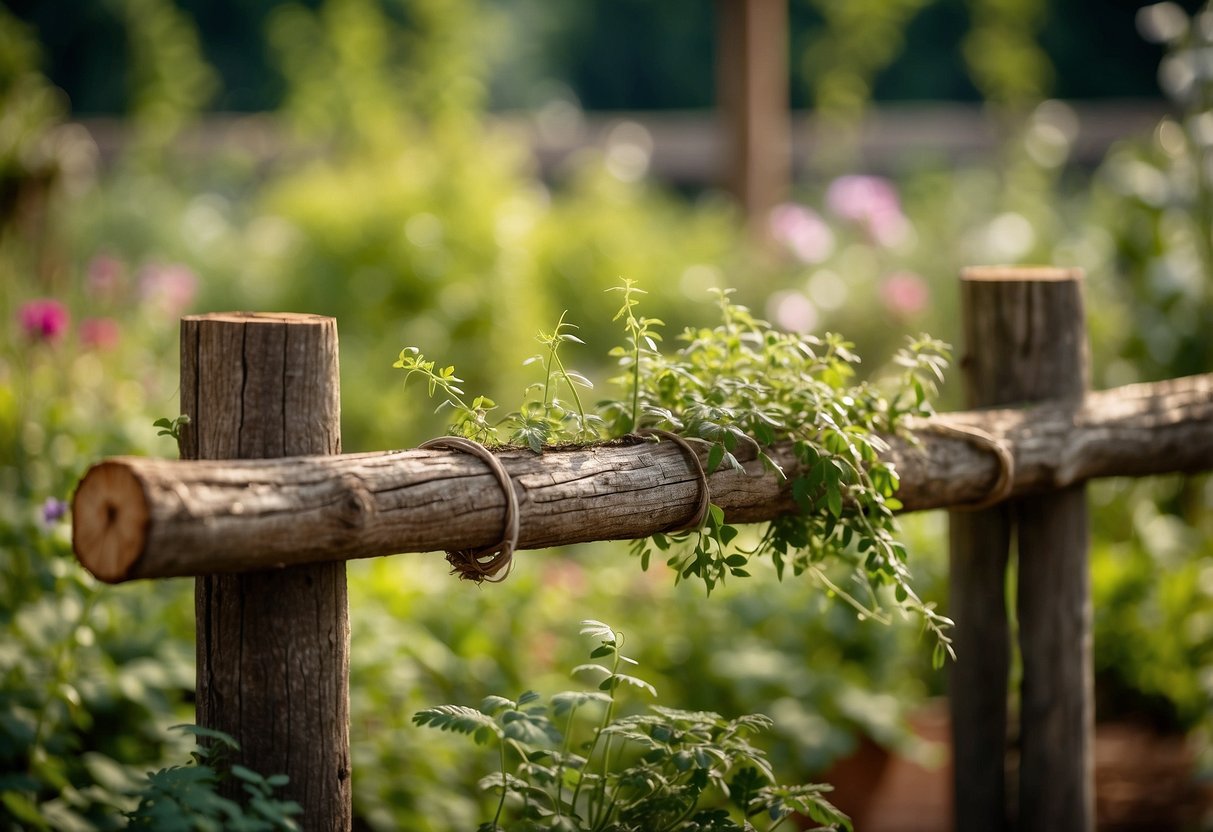
Using a rustic log trellis can add a whimsical charm to your herb garden.
Start by selecting sturdy logs. Ensure they are free of rot and pests. Dig holes about 1 to 2 feet deep to secure the main logs in the ground. Compact the earth around them with your feet to keep them stable.
Use twine or wire to connect the logs. This will create a structure for your herbs to climb. You can add extra logs or branches for additional support, forming a sturdy framework. For more ideas on creating rustic trellises, visit these rustic trellis ideas.
Benefits Of Using A Trellis In Herb Gardens

Using a trellis in your herb garden can bring many advantages. It helps you save space, enhances the look of your garden, and keeps your herbs healthy.
Maximizing Space
A trellis helps you make the most of your garden space. By growing herbs vertically, you free up ground space for other plants or activities. This is especially useful for small gardens, balconies, and rooftop gardens where space is limited. Herbs like basil, mint, and thyme can grow up a trellis easily, allowing you to plant more in a compact area. It also makes it simpler to reach your herbs when you need to harvest them.
Enhancing Aesthetic Appeal
Trellises can transform the look of your garden. With the right design, a trellis can become a stylish feature. You can choose from materials like wood, metal, or bamboo to match your garden’s theme. Colorful buckets or pots can be hung on the trellis, adding a vibrant touch. As herbs grow, they create a lush, green wall, which is pleasing to the eyes and can even serve as a natural privacy screen.
Improving Herb Health
Using a trellis can also improve the health of your herbs. Growing vertically allows better air circulation around the plants, reducing the risk of fungal diseases and pests. It also ensures that your herbs get more sunlight, which is crucial for their growth. Additionally, herbs are easier to water and maintain when they are off the ground, preventing waterlogging and root rot. This leads to healthier, stronger plants that produce abundant harvests.
By implementing these benefits, your herb garden will be more productive, beautiful, and easier to manage.
Types Of Trellises Suitable For Herb Gardens

When choosing a trellis for your herb garden, it’s crucial to consider the best materials and designs to support your plants. Some popular options include wooden, metal, and freestanding trellises, each having unique benefits and uses.
Wooden Trellises
Wooden trellises are a popular choice for herb gardens. They blend well with natural surroundings and offer durability. Cedar and redwood are excellent options because they resist rot and insects.
You can find wooden trellises in various styles, including lattice and fan shapes. These are easy to customize to fit your space. A lattice wooden trellis provides ample climbing space for herbs like basil and oregano.
Installing a wooden trellis is straightforward. Ensure it’s anchored well in the soil to support the weight of the growing herbs. Regular maintenance, like staining or sealing, can extend its lifespan. Despite needing some upkeep, they add a classic look to any garden.
Metal Trellises
Metal trellises offer durability and a modern look. They are made from materials like wrought iron, steel, or aluminum. These materials resist rust and provide strong support for heavier herb plants.
Metal trellises come in various designs, from simple grids to intricate patterns. A grid metal trellis is ideal for herbs like thyme and mint. Some metal trellises are coated with weather-resistant finishes to prolong their life.
Installation involves securing them firmly in the ground. Unlike wood, metal trellises require less maintenance, but occasional cleaning to remove rust is necessary. They are perfect for gardeners looking for a sleek and sturdy structure.
Freestanding Trellises
Freestanding trellises are highly versatile and can be placed anywhere in your garden. These trellises don’t need to be attached to a fixed structure, making them easy to move as needed. They work well for herbs in pots or smaller garden spaces.
Common freestanding trellis designs include A-frame and ladder styles. An A-frame trellis is great for supporting climbing herbs like rosemary and lavender. These designs are usually made from wood or metal.
Setup is simple: place them where your herbs are planted and ensure they are stable. Freestanding trellises offer flexibility and are a stylish addition to any herb garden. Regular checks for stability and small repairs can ensure they remain effective in your garden.
Tips For Choosing The Right Trellis For Your Herbs

When picking a trellis for your herb garden, you need to think about the kinds of herbs you’re growing, the space you have, and how strong and durable your trellis needs to be.
Consider Your Herb Types
Different herbs have different growth patterns. For example, climbing herbs like beans or peas would benefit from a taller, more structured trellis. On the other hand, herbs like basil or parsley might only need a simple support structure. You should match the trellis style to the herbs you are growing.
A lattice trellis works well for herbs that like to spread out as it provides multiple points for the plant to grip. For herbs that grow straight up, a single vertical pole or a teepee structure is often sufficient. Thinking about how your herbs grow can help you choose a trellis that best supports them.
Evaluate Garden Space
Your garden space will also influence your trellis choice. If you have a small area, you might consider a vertical trellis to maximize your growing space. These can be attached to walls or fences, saving valuable ground space.
For larger areas, you have the flexibility to use broader structures like a pergola-style trellis. These can create shaded areas while supporting your plants. Make a rough sketch of your garden layout to visualize where a trellis would fit best and how it will impact the overall organization of your garden.
Think About Durability
Durability is a key factor to consider. Materials like wood, metal, and plastic each have their pros and cons. Wood trellises are aesthetically pleasing but might require more maintenance to prevent rot. Metal trellises are very durable but can be expensive and sometimes prone to rust.
Plastic trellises are a budget-friendly option and are weather-resistant but might not support heavier plants as well. When choosing materials, think about the long-term care and the climate in your area. Opting for high-quality, durable materials even if they are a bit more expensive can save you time and money in the long run.







